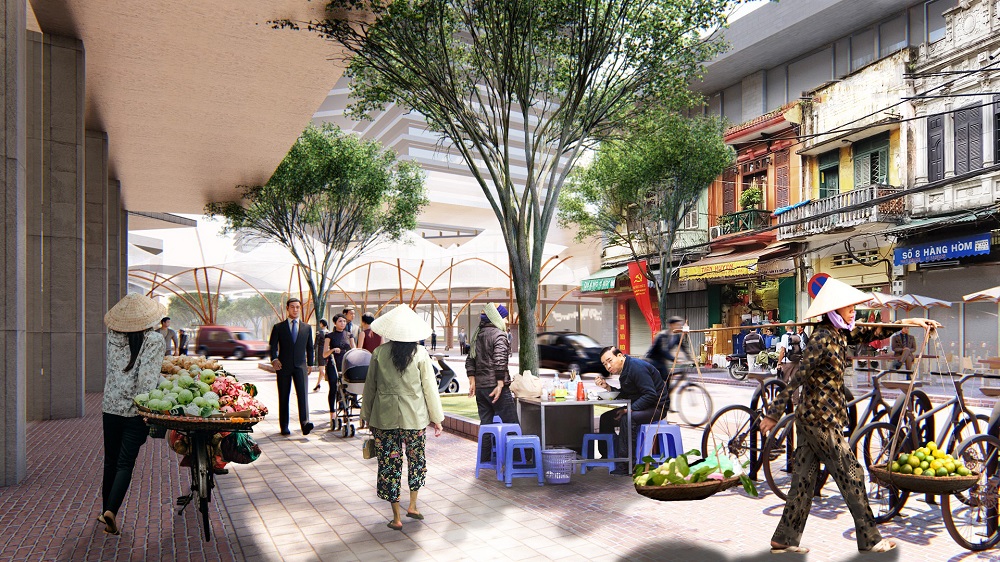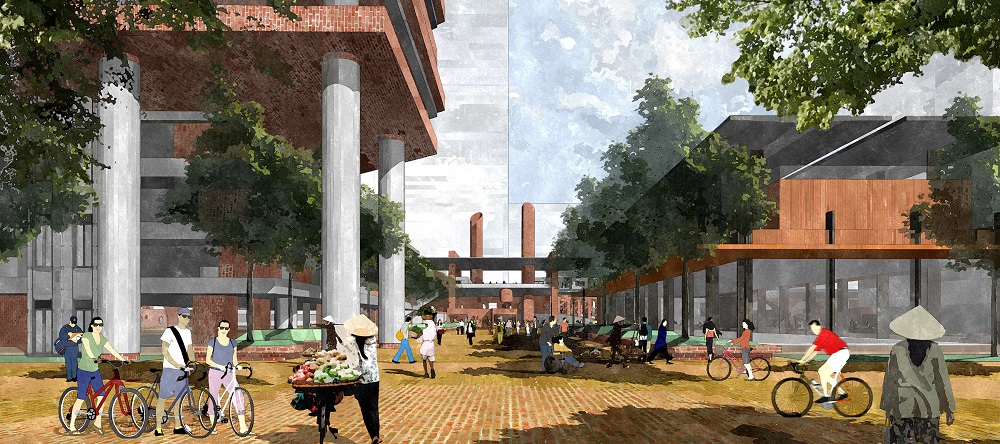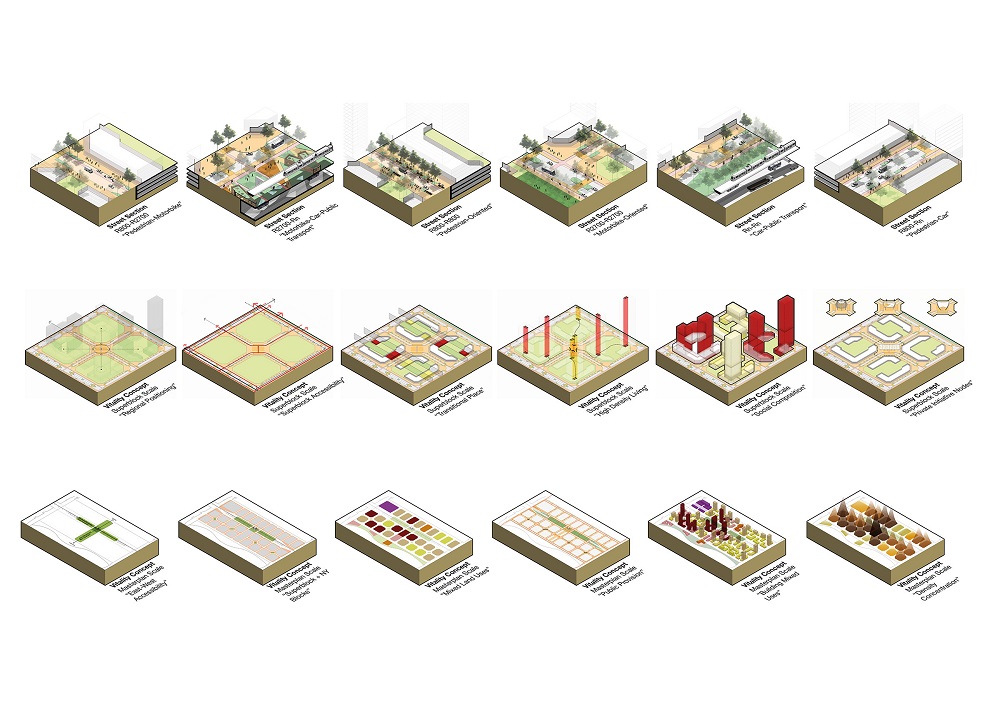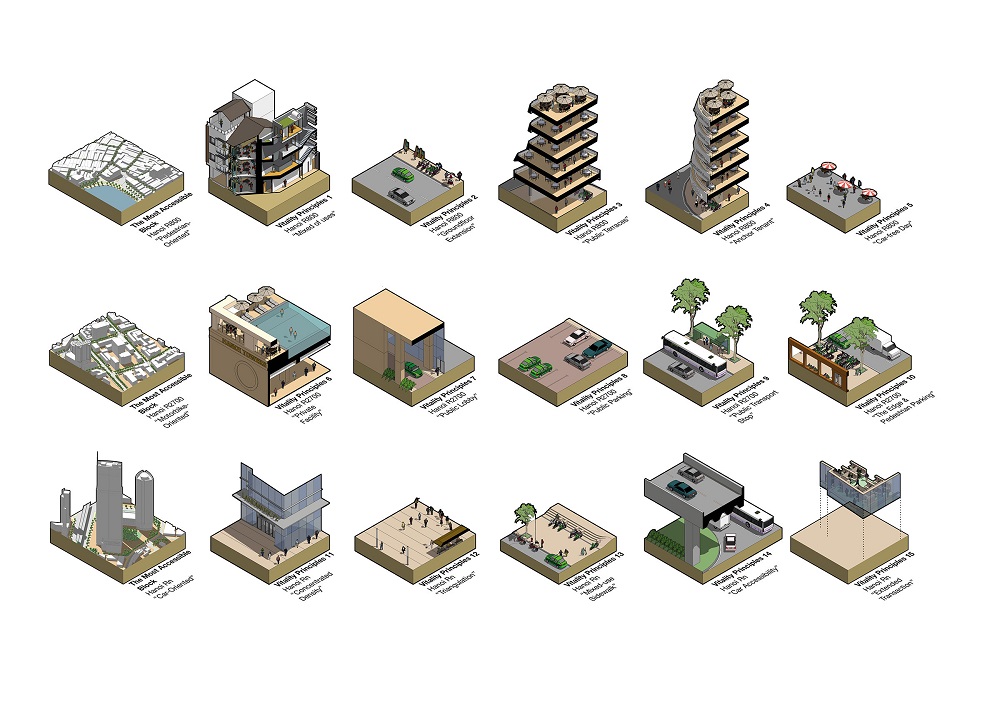Reza Ambardi Pradana’s project promotes urban vitality in the masterplanning process of Ecopark New Town in Hanoi

Cities for everyone: Ecopark city centre
Can you briefly explain your choice of subject?
“You see, but you don’t observe. The distinction is clear, Watson.”
– Sherlock Holmes
This simple quote by the renowned (fictional) detective Sherlock Holmes triggered and has been steering my academic and professional journey so far. It puts forward the fact that observation is a critical part to understand what happened in a crime scene thoroughly – how do people walk; what do people touch; where is the shortest path to escape. This notion has strangely linked me to Jan Gehl’s ‘cities for people’ concept, where instead of a crime scene, he observed how people behave in cities and how cities affect people’s behaviour. Over the past six years, I have been exploring this topic.
This exploration reached its turning point in the summer of 2017 when I went to Paris (France) and Tianducheng (China), where I incidentally found two Eiffel Towers, one apparently trying to copy the other. This striking phenomenon depict the very idea of this graduation project – to juxtapose the two topics: Gehl’s ‘cities for people’ (depicted by Paris old town and many other European old towns as the ideal ‘cities for people’) and Le Corbusier’s (1947) ‘the city of tomorrow’ (Tianducheng new town and many other new towns). Hence, the name of this graduation project: Cities for People -of Tomorrow.

Proposed use of space: mix of functions along the future light rail line.
What or who are your sources of inspiration?
Juxtaposing the ideas of Jan Gehl and Le Corbusier, their approach in urbanism are my primary sources of inspiration. Jan Gehl’s approach to investigating the public life of a place was the main inspiration for the earlier part of this graduation project. One of the main parts is observing Hanoi public life by utilising the tools locally adapted from Gehl Institute. These observations – rarely being performed in the context of new town masterplanning projects – are then being interpreted and simulated to the design of the new town. On the other hand, Le Corbusier’s prescriptive approach – which is still the status quo of designing a new town in Asia, becomes my primary source of inspiration in the design process of this graduation project. This juxtaposition of observative and prescriptive approach become the critical value of this graduation project.
Can you point out the key moment in your graduation project?
My experiences of working on a similar project in Hanoi for almost two years, have given me a pre-conceived idea about my graduation project. The key moment in my graduation project was after the public life observations that I did in Hanoi, which ultimately turned around my pre-conceived idea. These observations helped me understand how spaces are in reality used by the inhabitants, quantitively and qualitatively which is vital in challenging the status quo of new town masterplanning practice which rarely takes into account such consideration. I see this consideration as a distinctive value of my graduation project that differentiates my proposal with a ‘business as usual’ design consultant’s proposal and an ‘idealistic’ academic proposal.

System of superblocks
Project text
This graduation project juxtaposes two opposing ideas: Gehl’s ‘Cities for People’ from 2013 and Le Corbusier’s ‘City of Tomorrow’ from 1947. It seeks to give an answer to the intriguing question of how to create cities for people, as Gehl proposes, from scratch as new towns, as Le Corbusier proposes. This question is particularly relevant in Asia, where in many cases new towns make up the largest part of the urban area (more than 80% of Hanoi and 70% of Shanghai) but leave little room for urban vitality. In this project Hanoi is used as a test case for assessing the characteristics of urban vitality and their application in the design. This assessment has been made by examining the accessibility aspect. The whereabouts of key facilities have been itemized and the spatial integration examined, using the Space Syntax model, in areas with a radius increasing from 800 metres via 2700 metres to worldwide.

Evaluation of a resident’s daily life scenario
The next step consists of on-site observations done using methods borrowed from the Gehl Institute and taking place at three central city sites in Hanoi. These take in not just the quantitative aspect but also examine the qualitative aspects of local principles of urban vitality in the city centre. These observations and findings are then interpreted and applied in the design of the new town, a working method seldom adhered to when designing masterplans for new towns in Asia.
The design operates at four scales: street, superblock, masterplan and region. The idea is to learn from the local context. To this end, the vitality principles as observed in the centres of Hanoi have been interpreted and subsequently implemented at each scale.

City centre of Ecopark New Town
The final step is to evaluate the measures relating to urban vitality and the masterplanning process. One way is to evaluate the design using four personas, each with their own occupation, living standards and demands, that question the status quo of Hanoi new towns. In current design practice no one wonders who is going to use the space and in what way. Another way is to evaluate the design using the four urban design processes: design, development, management and the use of space. The deeper intention of these evaluations is to make explicit the design decisions that need taking at each scale and document their consequences for urban vitality. This brings to light aspects that can be used to develop and manage new towns.

Corridor to the light rail station, inspired by public life in Hanoi
Name
Reza Ambardi Pradana
School/discipline
Technische Universiteit Delft / Faculteit Bouwkunde
Start graduation
September 2017
End graduation
July 2018
What are you doing now?
After all the ideal graduation project processes, I have the very rare chance to actually “implement” my graduation project in real life as I am currently working in CPG Consultants, Singapore and involved in the project with the same context, scope, and stakeholders. Reflecting on my graduation project, there are several “slap in the face” that I feel relevant to my graduation project as a whole and of course to my urbanism practice. One of the significant differences in the design process during the completion of my graduation project and in real practice is the pace. What I did in six months for my graduation project, I had to do it in two weeks for the actual project. Hence it is essential in keeping to the impactful and practical design. Here, the tools that I learnt during my graduation project (i.e., Modelur and Space Syntax simulation) helped to make my design process more efficient.

Design in every scale: street, superblock, masterplan
What do you hope/want to achieve as a designer in the near and/or distant future?
I’m pretty sure that the topic of masterplanning and people-oriented design would be my objective to master in my professional journey. I realised that the often-overlooked challenge that future cities will face is not on the existing settlements but rather the new settlements – the clean slate urban developments. Here, where the vast majority of people are living and will be living in the future, is the very place that I believe needs the idea of ‘cities for people’ to be implanted. Moreover, my ultimate goal is to dedicate my expertise in creating better Indonesian cities. Currently, I am involved in a project in Indonesia that enable me to start achieving my goal.

Hanoi city centre urban vitality principles
Graduation multimedia :
a. Introduction
b. Observations